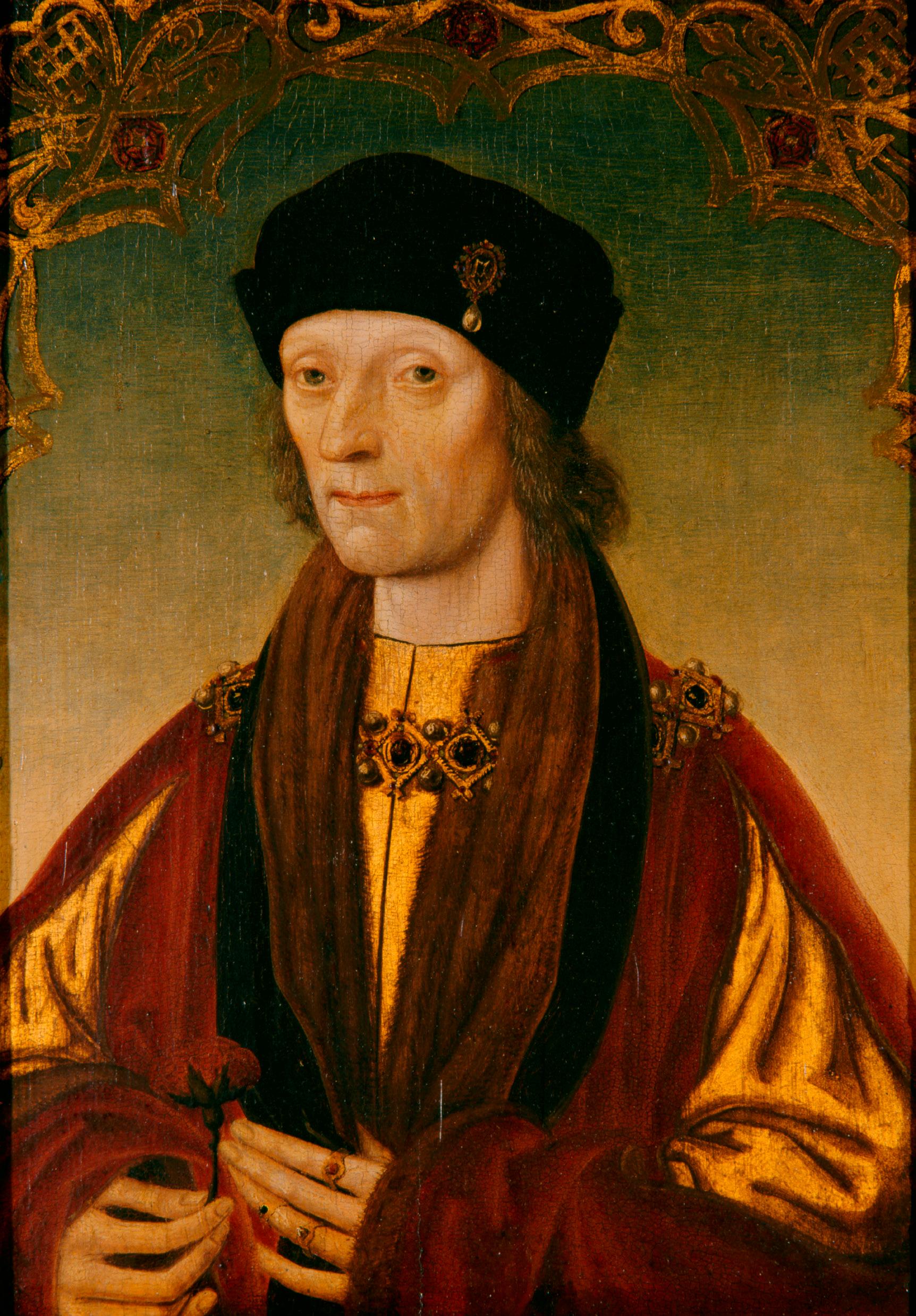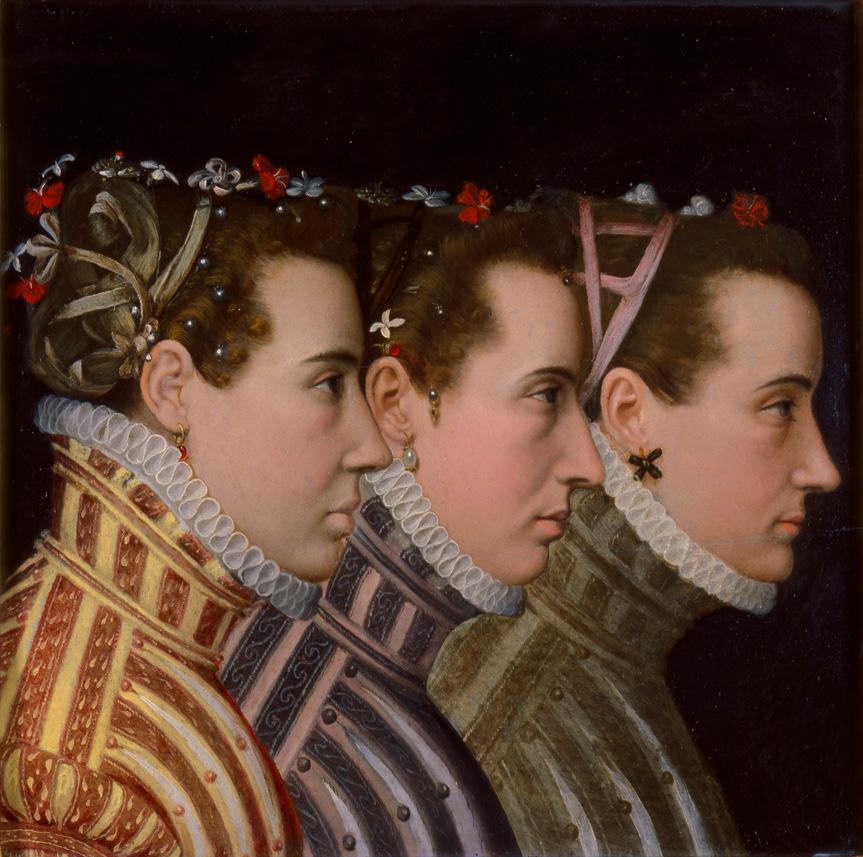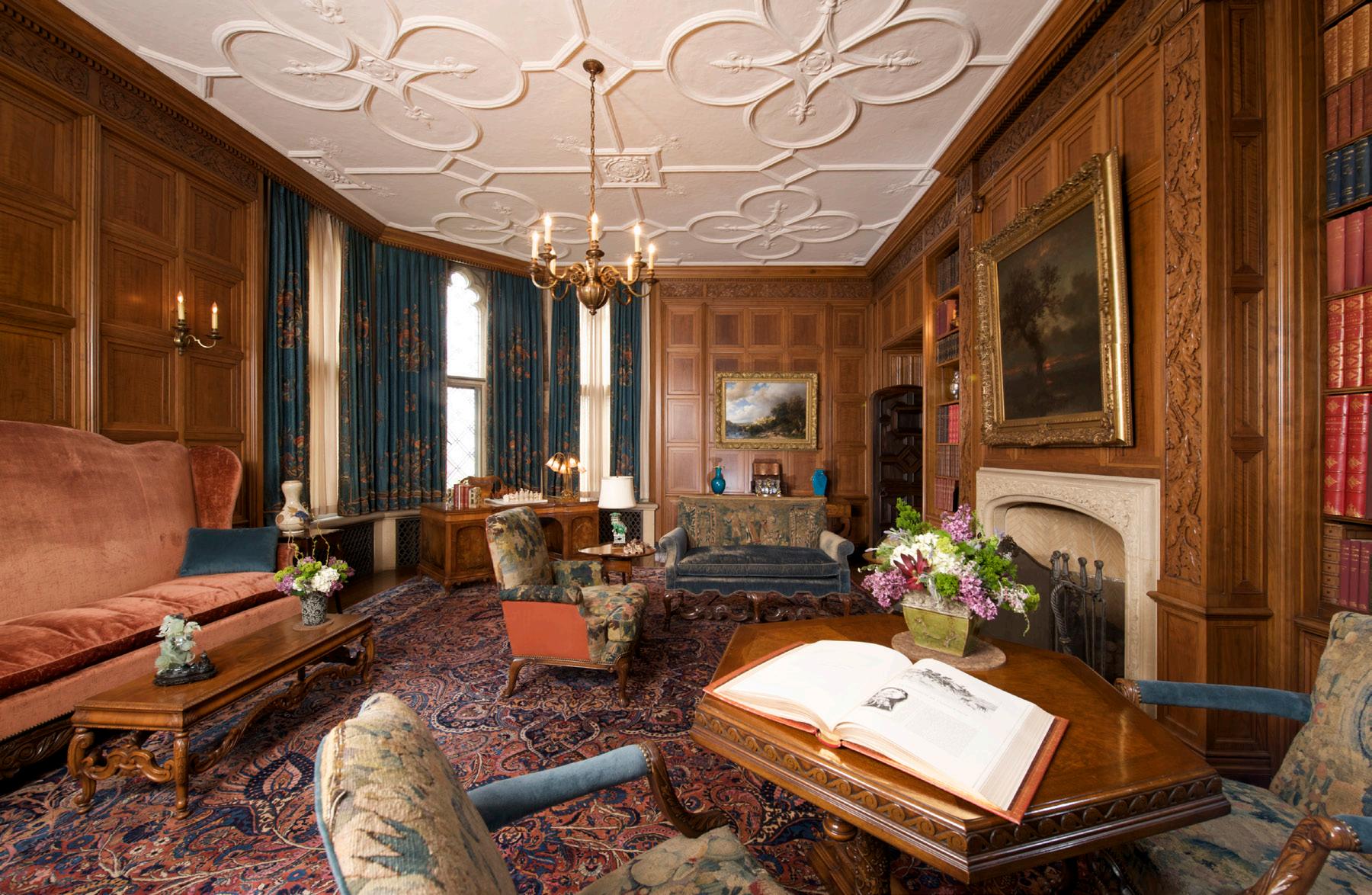
4 minute read
From the Collection: Portrait of Henry VII of England
Catherine Sawinski, Assistant Curator of European Art
English history can appear to be a long list of kings and queens with the same names. The queen that most of us are familiar with today is Queen Elizabeth II. The first and only other Queen Elizabeth ruled from 1558 to 1603.
In the Museum’s Renaissance galleries—the fourth gallery you walk into as you follow the route through the first floor—you will find a small portrait that, according to the label, is of Henry VII of England. The painting shows a pale man with a rather blank expression, dressed in a black hat and red and yellow clothes, and wearing some jewelry. Not too exciting, especially with larger, splashier portraits like The Artist’s Sister Minerva Anguissola or Triple Profile Portrait nearby. But, passing over this little painting would mean missing out on a great story.

Probably after Meynnart Weywyck, Henry VII of England, 1504/09. Bequest of Catherine Jean Quirk, M1989.63. Photo by P. Richard Eells.
Despite the modest appearance of the portrait, Henry VII was a king of England. He defeated Richard III in 1485 at the Battle of Bosworth. Richard is famous for being a hunchback, power-hungry villain, rumored to have killed his two young nephews, who were rivals to the throne. (Although now we recognize that Richard was not so one-dimensional, that he was also courageous, a good administrator, and well-spoken.) Henry’s success at this battle ended an eighty-five-year-long civil war between the House of Lancaster and the House of York. This civil war is often referred to as the War of the Roses, more on that in a moment.
Once crowned king, in 1485, Henry immediately set about uniting the country’s warring factions and creating a solid, lasting dynasty. His ruling family line was the Tudors. First, he married Elizabeth of York, the niece of his foe Richard. This marriage joined the houses of Lancaster and York, the two sides of the War of the Roses. Then, Henry limited the power of the wealthy landowning class to lessen the chance of another grab for power. And finally, he arranged marriages for his children in order to make powerful alliances with Spain, Scotland, and France. The result was a relatively peaceful and prosperous England under the Tudors, which culminated in the legendary reign of the aforementioned Queen Elizabeth I.

Attributed to Lucas de Heere, Triple Profile Portrait, ca. 1570. Gift of the Women's Exchange, M1966.55. Photo by John R. Glembin.
Henry, who reigned until 1509, succeeded in stabilizing his country, and our painting is the official portrait made to honor him. It certainly takes on new meaning when you realize that this man ended a civil war that lasted generations. It does not show a “boring” man; it shows a king who is calm, steady, and experienced, dressed in just enough expensive clothing and jewelry to show his high status and culture.
Now that we are taking a closer look, you might notice that Henry is holding a red rose. As you recall, the civil war that Henry ended is known as the War of the Roses. Well, this name came about in the nineteenth century, some five hundred years after the war, because both sides supposedly had roses in their emblems: white for York and red for Lancaster.

Sofonisba Anguissola, The Artist’s Sister Minerva Anguissola, ca. 1564. Layton Art Collection Inc., Gift of the family of Mrs. Frederick Vogel Jr., L1952.1. Photo by John R. Glembin.
This, however, is not entirely accurate—and demonstrates the influence of some savvy marketing even in Henry’s day. The truth is that although the York family used the white rose during the conflict (among other symbols), the Lancasters, while they often used the color red, did not fully associate themselves with a red rose until after Henry became king. The king, in fact, chose to represent the Lancasters as a red rose when creating a heraldic emblem that symbolically joined the two families, to promote the new dynasty. The pairing of the two roses, one white and one red, became known as the “Tudor rose”—and the mythology was born. You can see the design used on either side of Henry’s head in the tracery, or decorative lines, at the top of the painting.
The Tudor rose became a common decorative motif for architecture in England and can still be found in places such as the ceiling of Anne Boylen’s gatehouse at Hampton Court Palace, in London, and the entrance of King’s College Chapel, in Cambridge. In the United States, once you start to look for it, you will readily find the Tudor rose in architecture, especially in Tudor Revival homes. For instance, right here in Wisconsin, you can see them at the Paine Art Center and Gardens, in Oshkosh. The mansion has roses on the ceilings of the library and the dining room, and on the downspouts outside.

The library in the Paine Art Center and Gardens, Oshkosh.
I hope that after learning Henry VII’s story, you agree that the painting has quite a lot that it can teach us about the importance of taking the time to look beyond appearance—and to question our first impressions.










